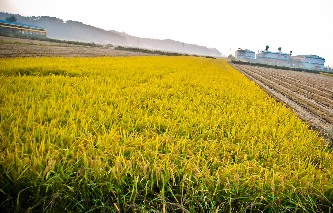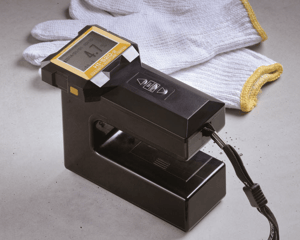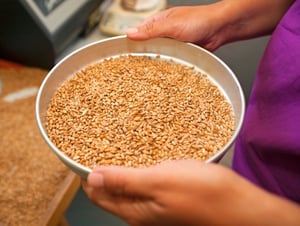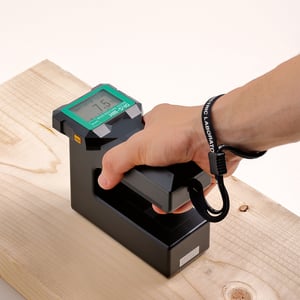 The right moisture levels at which to drain or harvest a crop varies from region to region and field to field.
The right moisture levels at which to drain or harvest a crop varies from region to region and field to field.
Despite being one of the most consumed foods in the world, anyone who’s responsible for managing rice crops knows that harvesting the delicate crops can be a challenge. Identifying the optimal range for your harvest may take years of careful research and analysis.
In the meantime, the University of Arkansas Agricultural Research Division has put forth guidelines to avoid crop quality or yield reductions, thus maximizing profit.
The latest research demonstrates optimal results with a harvest range at 17 to 21 percent moisture and completing combine capacity by the time rice is at 16 percent moisture. Harvesting at the optimal time requires portable, accurate test equipment that can be taken to the crops instantaneously as the crop matures and becomes more sensitive to weather patterns. Selective harvesting of plots as they fall into the ideal moisture range leads to higher yields all season long.
The study goes on to identify problems caused by rice harvested when it is too damp or too wet. If the rice is harvested when it is too damp, for example after a storm, the ends of the wet kernels can grind off, leading to more dust, less yield and, ultimately, less profit per bushel harvested.
Monitoring the rice as it dries is equally important, as it can crack if it dries below 15 percent moisture content. Additionally, sporadic spring rainstorms give rise to ‘rewetting’ of low-moisture kernels, further diminishing head rice yields. The study goes further to identify how varietals affected rapid moisture cycling. LaGrue and Jefferson varieties are even more susceptible to these field conditions, whereas some, like the Cypress, are more resilient. Regardless, given the hairline difference of just 1 percent between optimal harvesting and cracked kernels, choosing a reliable rice quality measurement instrument is the best investment a farm can make.
Having started Kett over 65 years ago specifically to give rice farmers lab quality equipment in the field, we ensure all of our test equipment is simple for any operator to calibrate and use, the University of Arkansas agrees. Once the rice is harvested, they recommend performance evaluation utilizing calibrated loss and yield monitors as “valuable management tools.” We have designed a variety of instruments to meet these needs:
- Kett's Riceter has long been the standard for portable rice testing
- And our latest, the PQ520, which sets the global standard for single grain seed moisture analysis.
However, having the right tool means little if it is not cared for properly. Regardless of what moisture meter you are using, the study emphasizes ensuring it is properly maintained to provide accurate readings, noting, “until the sensor is thoroughly clean, erroneous readings persist, even for years! Moisture errors are one of the most common errors that exceed 2 percent.”Well there you have it, our new Kett motto might just be “Keep that metal sensor “smooth and shiny!”
In the meantime, we’re here to help. Our equipment comes with one of the strongest guarantees on the market, and we’re always available to answer any questions our customers may have. The crops may be delicate and the weather finicky, but our equipment is built to last.
Next Steps:
Learn about our Performance Guarantee
Download the brochure on our new PQ520


